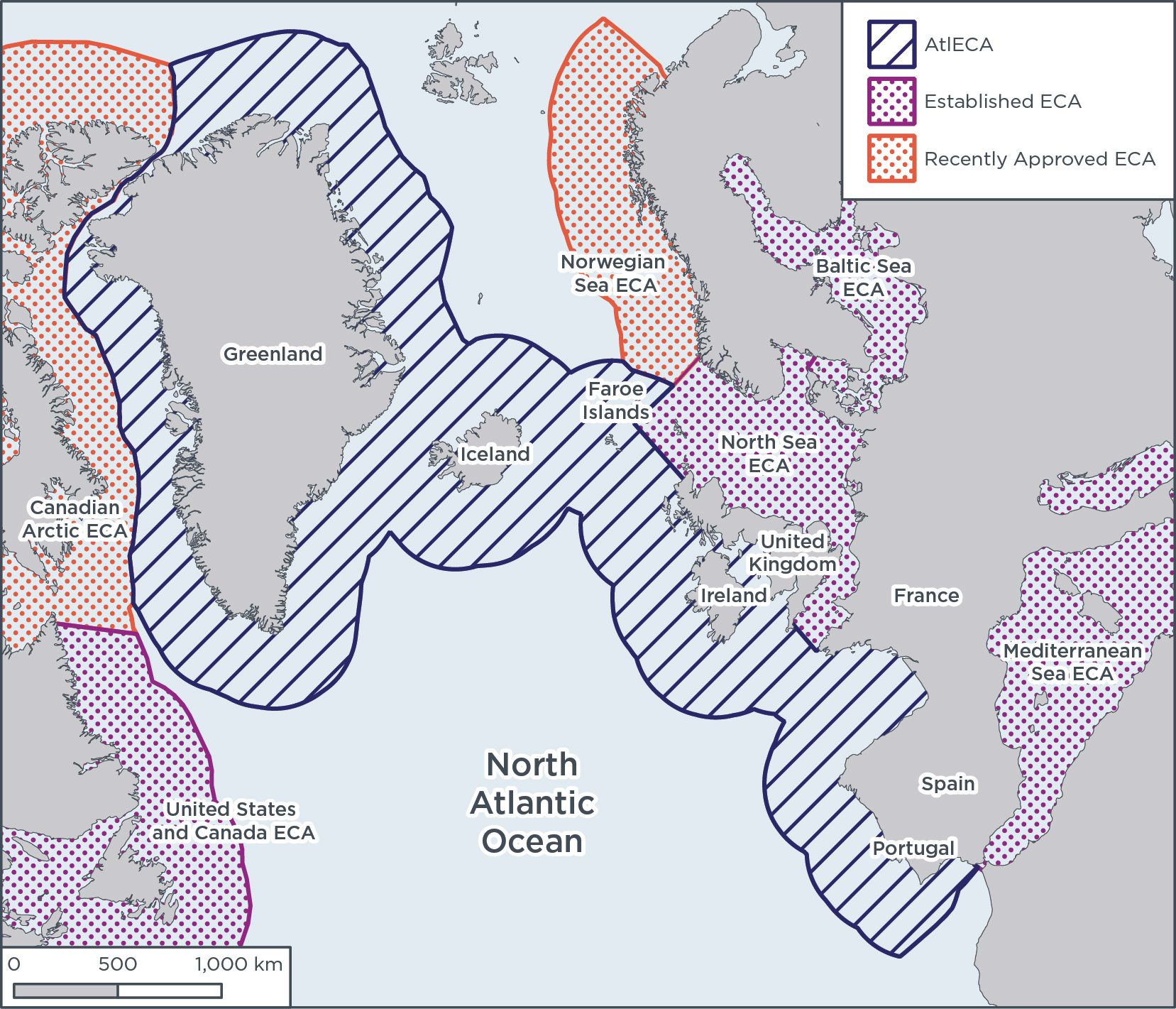Working Paper
Environmental and health benefits of a designated North Atlantic Emission Control Area
This study assesses the environmental and public health benefits of reducing emissions from ships in the North Atlantic Ocean by designating the region as an emission control area (ECA).
As one of the world’s busiest shipping pathway, a large volume of cargo vessels, tankers, and cruise ships traverse the North Atlantic daily. International shipping is a major source of sulfur oxides (SOx), particulate matter (PM), and nitrogen oxides (NOx), which contribute to health and environmental problems, including premature deaths and damage to the marine environment, critical marine mammal habitats, and areas of cultural and scientific significance.
One way to mitigate this impact is to establish an ECA, a designated area imposing stricter regulations to control shipping emissions of SOx, PM, and NOx. A previous ICCT assessment found that establishing the North Atlantic Emission Control Area (AtlECA), which includes the territorial seas and exclusive economic zones of the Faroe Islands, France, Greenland, Iceland, Ireland, Portugal, Spain, and the United Kingdom, has the potential to significantly reduce emissions from ships by 2030. Additionally, it would serve as a link between already established ECAs in the Baltic, North, and Mediterranean Sea, and connect them with recently approved ECAs in Norwegian Sea and Canadian Arctic.
Figure 1. The North Atlantic Emission Control Area and other established and recently approved emission control areas
This study expands our previous evaluation of potential shipping emissions reductions in the proposed AtlECA by providing an assessment of the health and environmental benefits under different scenarios based on fuel mix and compliance technology assumptions. The results of these two studies will be a part of a submission to the International Maritime Organization’s Marine Environment Protection Committee on designating the North Atlantic Emission Control Area.
Key research findings include:
- International shipping significantly contributes to air pollution in the AtlECA member states, while establishing the North Atlantic ECA has the potential to reduce shipping-attributable concentrations of SO2 by 86%, PM2.5 by 59%, and NO2 by 3%.
- The proposed AtECA could prevent between 118 and 176 premature deaths in 2030 alone under the plausible compliance scenarios. Cumulatively, between 2,900 and 4,300 premature deaths could be avoided between 2030 and 2050.
- The cumulative economic value of these health benefits could reach €19–€29 billion between 2030 and 2050.
- By reducing SOx and NOx, thereby mitigating pollutant deposition and ocean acidification, this new emission control area could play a critical role in protecting the region’s marine biodiversity and cultural sites.
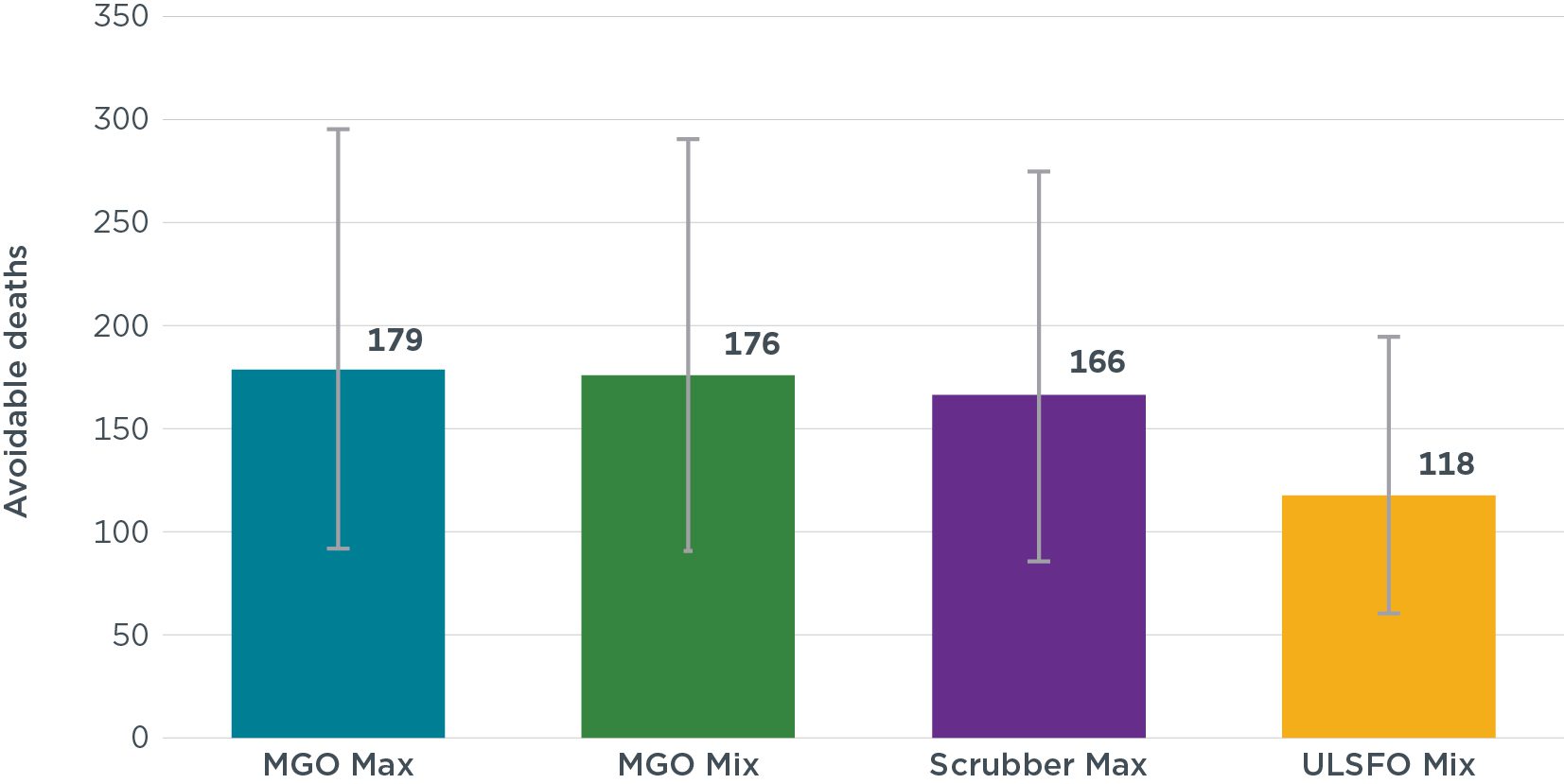
Estimated number of avoidable premature deaths in 2030 for different AtlECA fuel mix and technology compliance scenarios
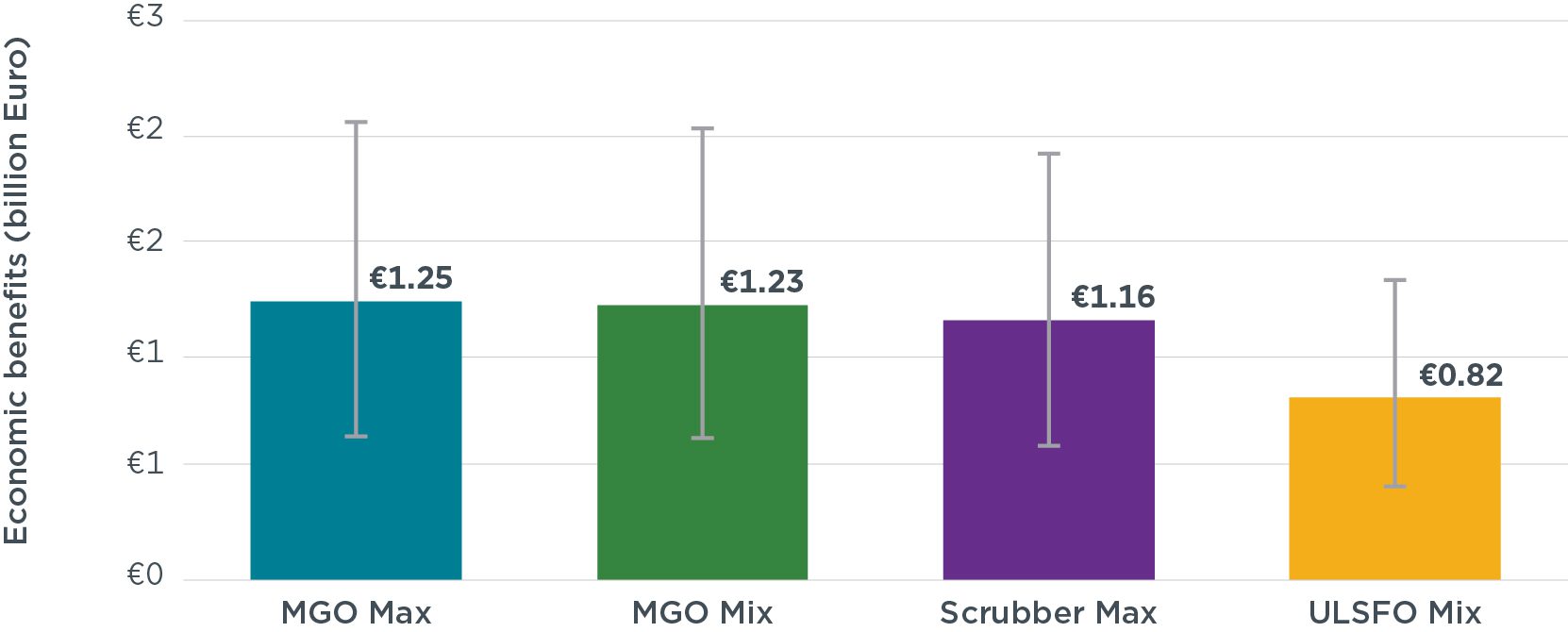
Estimated value of health benefits (in 2021 Euros) associated with avoidable premature deaths in 2030 for different AtlECA fuel mix and technology compliance scenarios
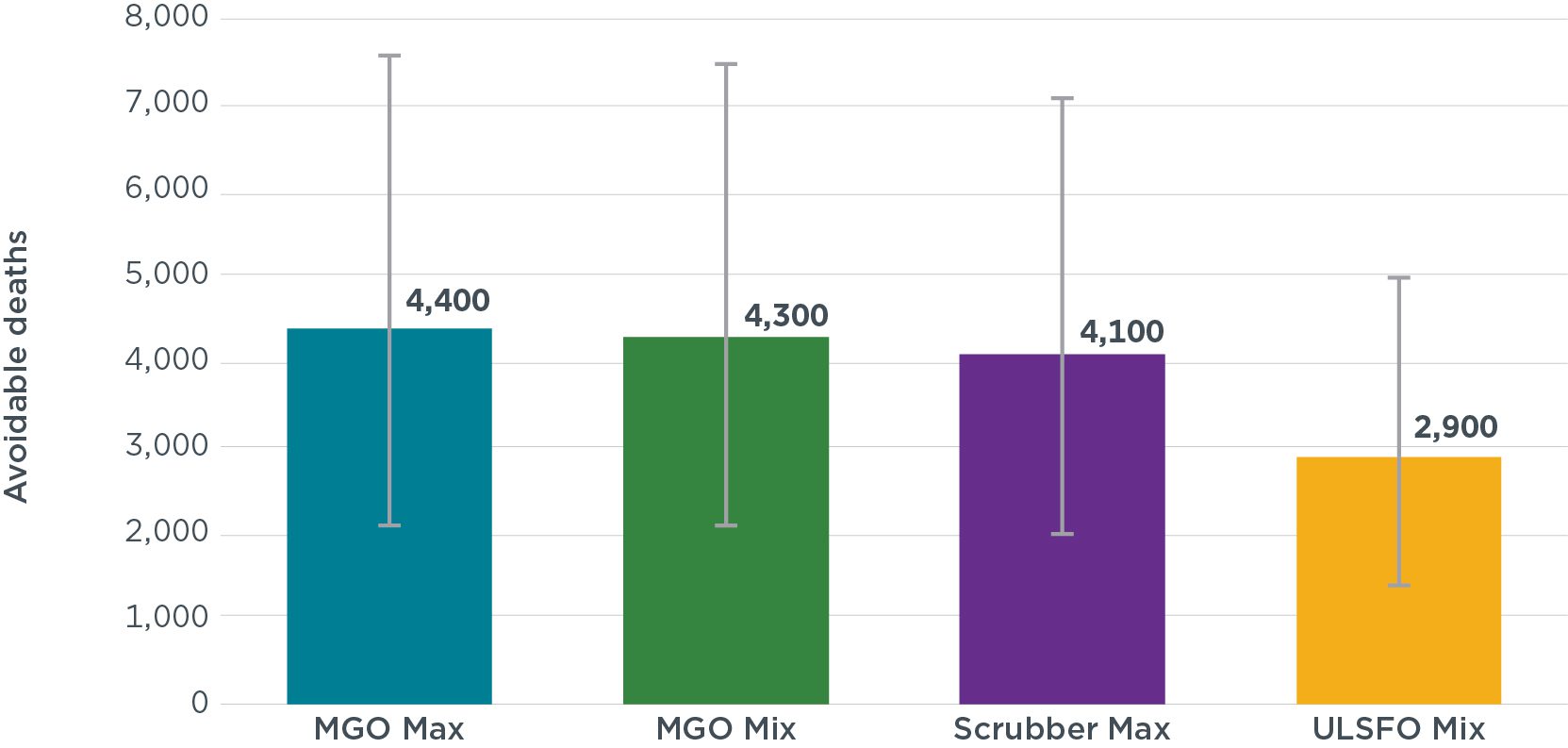
Estimated approximate cumulative number of avoidable premature deaths in 2030–2050 under different AtlECA fuel mix and technology compliance scenarios
Note: Error bars represent 95% confidence intervals.
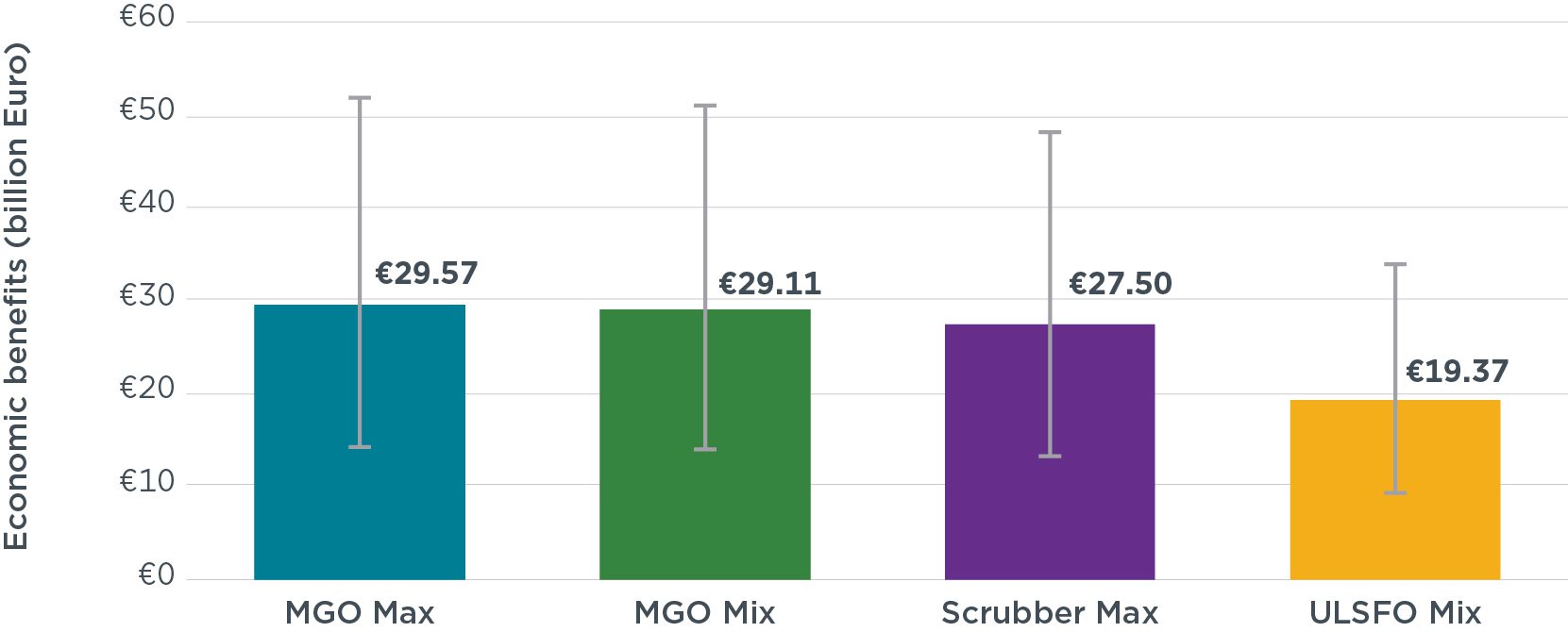
Estimated approximate cumulative value of health benefits (in 2021 Euros) associated with avoidable premature deaths in 2030–2050 under different AltECA fuel mix and technology compliance scenarios
Note: Error bars represent 95% confidence intervals.

